
Quick Mix: John Hall
The Quick Mix, interview with John Hall.
Who are you currently touring with/mixing?
I’m currently working at Novatech in Adelaide. Some of the bigger shows/projects I have mixed FOH for them are the Channel 7 ACC Carols by Candlelight, Australia Day in the City featuring Rikki Lee, the National Indigenous Music Awards, the S.A Music Awards, WOMAD, Mark Ferguson and the Marmalade Circus with the ASO, The Zep Boys with the DSO (orchestra mix), Adam Page with the ASO, ACC New Year’s Eve show at Elder Park, as well as mixing monitors for all the major festivals in SA, and a host of local and international acts that pass through. I’ve also system tech’d both FOH and monitors for major acts/tours including Neil Finn, Placebo, The Seekers, Pennywise, Midnight Oil, Angus and Julia Stone, and Elvis Presley’s The Wonder of You tour.
What are some other acts/bands you have worked with?
Cut Copy, Gotye, The Presets, Bertie Blackman, Mavis Staples, Iggy Pop, Public Enemy, MC Hammer, Hilltop Hoods, The Tea Party, Kate Ceberano, Daryl Braithwaite, Pennywise, Millencolin, The Vandals, Fear Factory, and Gary Clarke Jnr are some that come to mind. Did I mention I toured with Elvis?!
How long have you been doing live sound and what was your path to a career in audio engineering?
I started back in 1987, literally by accident. A good friend of mine owned a ‘production in a truck’ (big PA and light show) that was working for one of Melbourne’s big cover bands, Thunderbirds Are Go! — doing a lazy five nights a week. Glenn called me one afternoon and said he had hurt his back on the bump in and asked if I could come and bump out for him. He offered me $60, so I was there!
The next day he called and told me his back was still crook, and asked if could I come and bump in? ‘By the way,’ he said. ‘You’ll have to do monitors for the band. Don’t worry, I’ll show you how.’
His instruction was a simple four-step process.
Step 1 – Pull 50, 100, 200, 400, 800, 2k, 4k and 8k all the way out of all graphics.
Step 2 – Turn all the mid-range gain knobs fully to the left with the frequency knobs at 12 o’clock (1kHz on the old Peavey console)
Step 3 – Turn all the gain knobs to 12 o’clock
Step 4 – Turn up the channel send till it fed back or the band stopped yelling at you (not a binary scenario as I soon discovered).
Simple!
It was the fourth or fifth show I’d done when the singer, who ran the band with her stoner guitarist boyfriend, ran off stage mid-song screaming at me, and I’m quoting directly, ‘This is my f**king band, so if you don’t make me the f**king loudest **** onstage, you can f**k right off!!!”
Meanwhile, the boyfriend was grinning at me while he had his two Fender twins, which never went below nine, pointed straight at her head! Good times!
I ended up doing this gig for almost two years. I was also a musician (okay, I was a drummer) so I bounced back and forth between doing sound and playing until my late ’20s. There was too much gear to lug around as a drummer so I dedicated myself to being a sound guy, and went from loading and unloading my panel van to doing the same with big trucks and bigger gear!
The two crew I worked with for the band were also from my hometown of Frankston. Damien Young, who became and still is a very successful FOH engineer and business owner (Pony Music) and Matt Arthur, who now lives in London, and is an in-demand LD, working for acts like Pet Shop Boys, Bryan Ferry, System of a Down, Mark Ronson and Chemical Brothers to name a few.
Not bad for some bogan lads from Franga!
What is your favourite console and why?
At the moment, it’s the Avid S6L. A very handy console to have on the big shows. Being able to have some functions automate in real time, without timecode running, is super helpful, like having the choir mics duck on a 150-voice choir standing behind a 40-piece orchestra when they’re not singing was a lifesaver! I know the Profile software has a basic version of this, but in the S6L software, it has been greatly improved and refined.
I do love all Digicos, having used the D5 when they first came out and having a couple of DS00s installed in Melbourne’s The Toff in Town (one in the studio). The SD range are all architecturally great boards, and there is the Midas/Soundtracs connection as well, so they sound great! And who can go past the lovely Midas Heritage 3k? The pinnacle of pure analogue perfection.
Favourite microphone or any other piece of kit?
My personal favourite mics, that I always use on every gig, are my Sennheiser e602 (series 1), e901 and e905. You can put them on any kick and snare and, to my drummer ears, faithfully reproduce the sound of those drums. If required, you can manipulate them to work in any genre mix. You can EQ them or not, and they always sound great!
My other ‘American Express’ (don’t leave home without it) bit of kit is my Antelope Isochrone OSX word clock. Takes the smear away from Profiles, and the bark out of the Yamahas (a 5D clocked to 96k is the closest digital thing to a Heritage I’ve heard). NB: my opinion only.
Most memorable gig or career highlight?
The last one!
But seriously folks, there have been so very many, I’m truly blessed to have the career I do. Some of the festival shows such as Lollapalooza in Chicago, Austin City Limits in Texas, any of the big European festivals, playing to crowds of 40-70,000 people are some of the biggest highlights. The tour Cut Copy did with Daft Punk through Australia was amazing! But the one that stands out for me was mixing at Red Rocks in Colorado. The venue and location are spectacular and having grown up on U2’s Under a Blood Red Sky – Live at Red Rocks, it was a huge moment for the inner-child music buff in me.
Walking up the tunnel to FOH and seeing all the drawings and graffiti left by some of the pioneers and greats of our industry was totally awe-inspiring and humbling.
What are three mixing techniques you regularly employ
I suppose I should reveal some big secret technique or trickery here, like parallel compression, side chaining the kick gate to an oscillator running a 50Hz tone, or a snare mic that’s 47 and a half degrees off axis to the rack tom, but really, it’s just these three things:
Gain Structure! It’s not really a technique I suppose or particularly sexy, but like atoms (or quarks to those quantum mechanically inclined) are to life,
it’s a fundamental that is behind almost every great mix. I say almost, as I have seen some amazing exceptions to this (Wardy and Dave Wernham come to mind).
Mic Placement, again, not sexy, but with gain structure, are 90% of my mix.
The right mic in the right place will save you a bunch of time and heartache!
And finally, to just get out of my own way and don’t overthink it! People payed to see and hear the band, not me (or the kick drum!).
What are three pieces of gear or features that have come out and been game changers for you?
I think digital consoles are the most obvious one, for me, and the industry at large. I remember the days when people first started talking about them as being a thing. The push back was intense! Everyone was convinced they wouldn’t catch on, it was just a fad. Technology for technologies sake. But just like the CD, they quickly became (almost overnight in the scheme of things) a reality. The venerable PM5D first arrived in 2004, after its big brother the 1D (2001) was declared ‘too much mixer’ for most applications, and is still one of the most reliable and easy to use consoles out there. The first versions of the Profile (2005) were diabolical at best, and extremely unreliable at worst. I remember mixing on a Profile somewhere around 2008 and halfway through a song the PA just went berserk! The FOH graphic ceased to exist, the page was just empty! I hit the dropdown menu and inserted another EQ, and it came back with my tune on it! It was like Apple vs PC. Eventually Avid got its shit together, and as all the big American acts wanted the album reproduced live, it became the must have board for production companies. Saved on labor costs for sure, and for a while, saved on space as well.
I remember laughing at an engineer carrying his Profile through the crowd at a Lollapalooza and being told there was no room at the inn as the FOH tent was full of Profiles. What was even funnier was the festival board had prime position as the headline act engineer (me) was using it, so everyone was behind me. I told them all they could use it, but they would rather carry their console out there than a USB stick!
The Dolby Lake processor was a big one as well, and of course line arrays, and digital amps. These were all massive game changers.
But for me personally, the TC D2 was the one bit of outboard that changed things for me. It was a small, inexpensive unit, that broke on the road all the time, but there you have it. I loved it! The Pattern Tap button was gold! On a couple of fly dates, when we were in and out on the same day, and all our limited excess weight and cabin baggage went to things like guitars and the like, I would take the D2 out of my rack, leave my word clock and two Distressors behind, and carry it on my lap if I had to!
How have your working methods changed since you began live sound mixing?
The main change for me is the use of offline editors. These are by far the best part of the digital revolution. In the days of yore, you would have to nervously wait for the act before to finish, the system guy (if he was any good) to normalise the console, patch in your processors, then madly fly over the board tweaking the channels (or at least the most important ones) while your band was pushing out and patching in before your five-minute line check, which all being well, you only had to tweak the gain because you’d done everything else. Then spend the first few songs fixing everything you missed!
Being able to pre-patch your outputs, set up all your DCAs and groups, dial in EQs, comps and gates, set up your FX parameters and sends ahead of time, has made for a more civilised change over!
I have found going in as the festival monitor engineer armed only with an input list and plot for 10 acts, I can have each act’s show at a point where I’m able to just open each channel, maybe tweak a bit of gain as the touring FOH guy smashes through the line check at a million miles an hour, and quickly have each player pretty comfortable without too much fuss.
The musicians are on edge as it is and are nervous about your ability to deliver the mixes they need. If they sense you’re calm and got your shit together, that’s 80% of the battle. You know going in, especially on a Soundwave type festival with rock bands, what everyone is going to want, so being able to start there, makes your day a hell of a lot better! Things like Laneway are, ahh, shall we say a bit more bespoke, but the singer is always going to want to hear themselves, right?
I’ve got library files for different consoles, for graphics for specific speakers and sends, which get me close to done on the set-up day, giving me more time to get myself comfortable and prepared before show day.
One thing I would say about being able to create and re-use show files is that I was relying too much on the show-file I made last year, or the tour before that, or with that other act I did that time that sounded really good. First of all, it’s not doing justice to the band that’s in front of me, even if it’s the same band I made the file with. Music, especially live music, is an artistic expression and as such is greatly affected by the environment and the personalities performing it. Those two things will never be the same again, ever. So why should my mix be? Of course, I’m not going to mix my metal band dub-style, but I really feel, unless I’m in a time sensitive festival change over, I try and make a fresh mix of the band that represents who and where they are right then.
I got into the ritual of just loading the last show and running with that, because it worked last night. Eventually I started to not want to make changes to it because it sounded good last night. During a long tour, I’d start to zone out a bit during the show, and that’s not good. When your mind starts to wander when your mixing in front of 50,000 people, you have a problem!
I got in the habit of having a blank show file for tour shows that only had labelled channels. I knew how to mix the band with consistency and make them sound good, it just made it fun again and kept me on point. Above all else, it gave me something to do!
Any tips/words of wisdom for someone starting out?
The best advice I can give is to look after your health; both physical and mental.
Eat as healthy as you can, get as much exercise as you can and don’t party too much. Though it’s good to blow off steam every once in a while!
A good health tip I got from one of Australia’s doyen of touring, Mr Jon Nelson, is to carry a box of muesli (he preferred Weet Bix) in your bag. Especially for all you vegetarians and vegans, getting any kind of real meal can be a nightmare. At least you can have a bowl of something to keep you going till the next, hopefully vego-friendly, country.
Another good habit to get into is going for a walk after soundcheck to find a nice restaurant to have a good healthy meal in and have some non-work related conversations with the other crew, or locals. Eating at least one healthy meal a day will do wonders for your body, but it’s the walk that is perhaps the most important. The walk will obviously do you good, physically, but mentally, it allows you to blow the cobwebs out of your mind, release the odd endorphin and revive your spirit. This is so important. No matter how tough you think you are mentally, your mind can take you to some dark places on tour if left unchecked. Mental health has been ignored by touring professionals for far too long.
Recent studies have found similarities between touring crews and soldiers, especially when it comes to PTSD. Too many touring folk suffer from a form of this and don’t even realise it. Obviously, we’re not out there fighting a war with guns, but there is a myriad of other similarities. The mind set of being in the trenches with your squad, in a foreign country, away from your family and friends, working in what is often a high stress environment, that is relentless as it is monotonous. Failure is not an option. 22 hour days are not uncommon
You’re told when to eat, when to be in the lobby, when to load in or out, when to be where you need to be, your life is essentially mapped out for the foreseeable future, by someone else and you don’t have a say in it or even have to think about it.
Not having a healthy diet and some form of exercise, other than lifting heavy things, can leave you physically and mentally drained. Your mind slowly shuts down. Even though you’re surrounded by the same people who become your family every day, loneliness can set in pretty easily. The feeling of isolation, left untended, can eat you up. And the come down at the end of the tour is massive. You’re back home, there’s no food in the cupboard, you have a suitcase full of dirty washing and no one has come by to pick it up to be washed. There is no one to tell you what to do, or when. You’re so tired that you just sleep for a couple of days. You’ve lost touch with almost all your close friends because you’ve been away for a couple of years, you start to miss your tour family like crazy, and you realise you haven’t spoken a word to anyone in almost a week. Now that’s bad enough, eventually you venture out and reconnect with your life, but then the next tour starts and off you go again.
A lot of you may recognise some of these symptoms from a two or three-week lap around the country. Imagine now six months away overseas, a year, two or in some cases, three years at a time on the road, and you can see how, left unchecked, it can become a real problem.
Make sure you foster an environment amongst the touring party that allows each of you to talk about any issues you or they might be having. Always make time for the others on the road with you. Check in with them regularly and make sure they’re okay. No issue is too small. Avoid self-medicating as this just exacerbates the problem.
And call your mother once in a while!










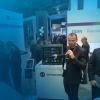
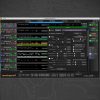




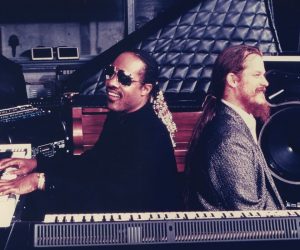

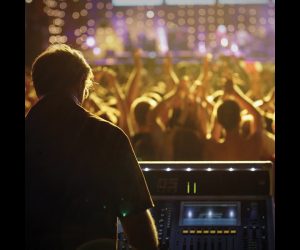
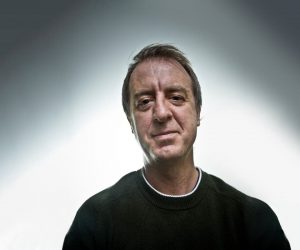






RESPONSES